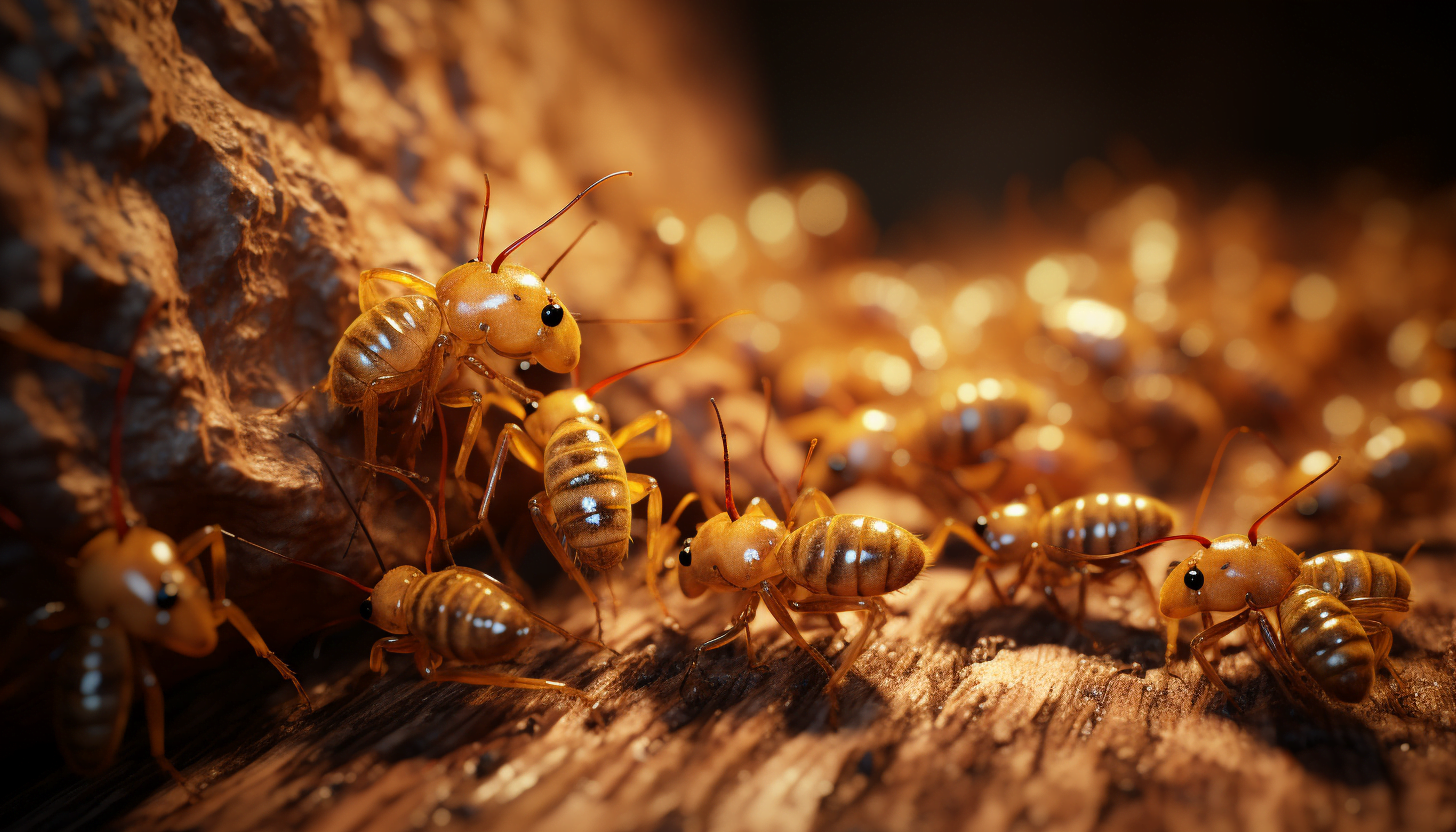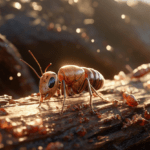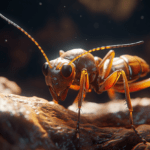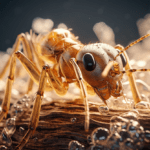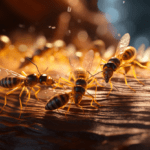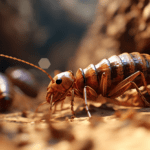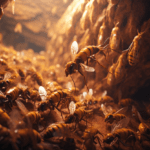Termites are intriguing creatures that play a crucial role in the ecosystem. These tiny insects are known for their ability to digest cellulose, a component found in plant-based materials. While they may not have a discerning palate like humans, termites do have preferences when it comes to their meals. In this article, we will explore the fascinating world of termite dining habits, focusing specifically on their favorite breakfast choices.
Termite Diet and Feeding Habits
Before diving into their breakfast preferences, it is essential to understand the overall diet and feeding habits of termites. Termites are primarily herbivores, relying on plant-based materials for sustenance. Their diet consists of cellulose-rich substances, such as wood, leaves, grass, and other organic matter. These insects play a vital role in decomposing dead plant material, recycling nutrients back into the ecosystem.
The Nutritional Content of Termites’ Favorite Foods
Termites’ favorite foods are not only delicious to them but also highly nutritious. These tiny insects have adapted to extract vital nutrients from plant cellulose. Cellulose is a complex carbohydrate that provides the energy termites need to survive. It also contains essential nutrients like proteins, fats, minerals, and vitamins. By consuming cellulose-rich materials, termites ensure that their bodies receive a well-balanced diet.
Adaptations to Digest Cellulose
Breaking down cellulose is no easy feat. Unlike other animals, termites have unique adaptations that allow them to digest this complex carbohydrate effectively. They possess specialized microorganisms, called symbiotic gut bacteria, that produce enzymes capable of breaking down cellulose into simpler forms. These enzymes break the cellulose bonds, releasing the valuable nutrients trapped within.
Typical Feeding Habits of Termites
Termites exhibit a range of feeding habits depending on their specific role within the colony. Some termites, known as workers, are responsible for gathering food for the entire community. They scour their surroundings, seeking out cellulose-rich materials to sustain the colony. Other termites, like soldiers and reproductive individuals, have different roles and may consume food in varying quantities.
Why is it Important to Know What Termites Eat for Breakfast?
Understanding what termites eat for breakfast is crucial for several reasons. First and foremost, it helps us comprehend their dietary requirements and preferences. By understanding their food choices, we can better devise pest control strategies that target their preferred meals, minimizing potential infestations. Additionally, studying termite nutrition provides valuable insights into their role in ecosystem dynamics and nutrient cycling.
What Do Termites Eat for Breakfast?
You might wonder what temites savor for their first meal of the day. Termites do not have a single favorite breakfast; their preferences can vary depending on the species and environmental factors. However, some common breakfast options for termites include wood, grass, leaves, and even the decaying remains of other insects. These choices ensure that termites start their day with a healthy dose of cellulose and essential nutrients.
The Favorite Breakfast Menu
The breakfast menu for termites is diverse and rich in cellulose. Wood is one of the primary choices for many termite species. Termites have specialized bacteria in their guts that can break down the complex fibers in wood. Grass and leaves are also popular options, providing termites with a readily available source of cellulose. Additionally, termites may consume decaying insects, optimizing their nutrient intake.
Feeding Behavior and Social Structure
Termites have a complex social structure that influences their feeding behavior. Within a termite colony, there is a hierarchy, with the queen at the top, followed by reproductive individuals, soldiers, and workers. This hierarchy dictates access to food resources, ensuring the survival and growth of the entire colony. Workers, the primary foragers, collect food and distribute it to the rest of the community, ensuring everyone is adequately fed.
Ecological Impact of Termite Breakfast
Termites play a crucial role in the ecosystem due to their feeding habits. By consuming plant-based materials, termites aid in the decomposition process, breaking down dead plant matter and returning nutrients to the soil. This nutrient recycling has a positive impact on soil fertility and overall ecosystem health. Additionally, termites serve as a source of nutrition for various predators, contributing to the intricately balanced web of life.
Termite Breakfast!
[youtube v=”H7pZeqAGal8″]
Breakfast is known to be the most important meal of the day, even for the animals at Kids Saving the Rainforest wildlife sanctuary. In this sunny morning, one of the sanctuary’s residents, Mr. Bean, a baby tamandua, is taken on a stroll to find something delicious to eat. Mr. Bean usually crawls around and searches in the trees but today he has the luxury of riding on top of a human’s head.
The main staple of Mr. Bean’s breakfast is termites and ants. Tamanduas are picky eaters when it comes to the type of insects they consume. However, unfortunately, the termite nest they come across is not to Mr. Bean’s liking, so they move on to another spot.
In search of a more appetizing termite nest, they come across a dead tree where they find a different kind of termite. Mr. Bean starts having a feast, using his massive front claws to break apart pieces of wood and exposing the termites crawling within. He then uses his long sticky tongue to lap them up.
The tamandua’s tongue is exceptionally long, measuring up to 16 inches when fully grown. It is a powerful tool for capturing termites and ants. Its long length allows it to reach deep into termite nests and slurp up the insects. Mr. Bean’s tongue may not be as long as that of an adult tamandua, but it is still long enough for him to touch his nose with it.
Tamanduas have a dense coat of fur that protects them from the bites and stings of termites and ants. The ants can crawl all over them without causing any harm. This dense fur acts as a protective shield.
Mr. Bean, being a baby tamandua, still has a lot of growing to do. When fully grown, he can weigh up to 35 pounds. The length of his body is mostly made up of his tail, which can reach two-and-a-half to three feet in length. As he matures, his fur will turn from white to golden.
After Mr. Bean has his fill of termites and ants, breakfast time is over. But this encounter with a baby tamandua has been an exciting and educational experience. Spending the morning with Mr. Bean showcases the unique behavior and characteristics of this fascinating creature.
Although termites might not be everyone’s first choice for breakfast, they are a nutritious meal for tamanduas. And after seeing Mr. Bean enjoy his termite breakfast, it makes one wonder if they could also try termites and discover their taste.
If you thought Mr. Bean was adorable, make sure to watch other videos from Coyote Peterson’s adventures, including the morning of exercise with Peru, the smallest tamandua. These encounters with baby animals are always heartwarming and extremely curious.
Join Coyote Peterson and his crew on their adventures by subscribing to the channel, so you don’t miss any more episodes of Breaking Trail. Get ready to be brave and stay wild!
Conclusion
Termites have a unique and diverse diet, encompassing various cellulose-rich materials. While they may not have a distinct favorite breakfast, these tiny insects ensure they consume an ample amount of cellulose and essential nutrients to support their colonies. Understanding termite feeding habits and the ecological impact of their diet allows us to appreciate their role in maintaining ecosystem balance.
FAQs (Frequently Asked Questions)
- What makes cellulose-rich materials a staple in a termite’s diet?
Cellulose contains essential nutrients and provides the energy termites need for survival. Their specialized gut bacteria can break down cellulose effectively. - Do all termite species have the same breakfast preferences?
No, breakfast preferences can vary depending on the termite species and environmental factors. Wood, grass, leaves, and decaying insects are common options. - Can termite breakfast choices impact pest control strategies?
Yes, understanding termite dietary preferences helps in developing targeted pest control measures that focus on their preferred meals, preventing potential infestations. - How do termite feeding habits contribute to soil fertility?
Termites aid in the decomposition process by breaking down plant-based materials. This decomposition returns nutrients to the soil, enhancing its fertility. - What is the significance of termite breakfast in the ecosystem?
Termites play a vital role in nutrient cycling and act as a food source for various predators. Their breakfast choices contribute to the overall health and balance of ecosystems.
- SYBAU See You Baby Meaning: Gen Z Slang Evolves - July 1, 2025
- Unlock Your Inner Youth: Lifestyle Secrets for a Vibrant Life - July 1, 2025
- Decode SYBAU Meaning: Gen Z Slang Explained - July 1, 2025
